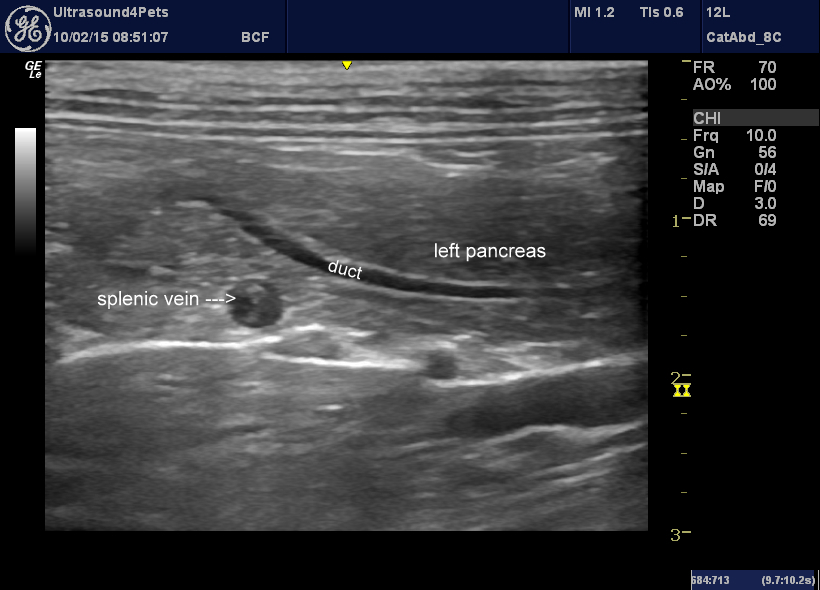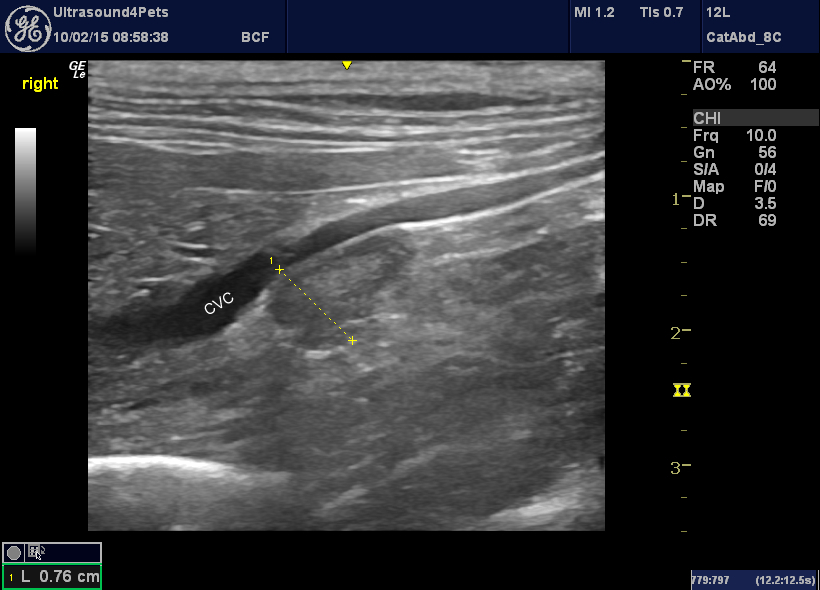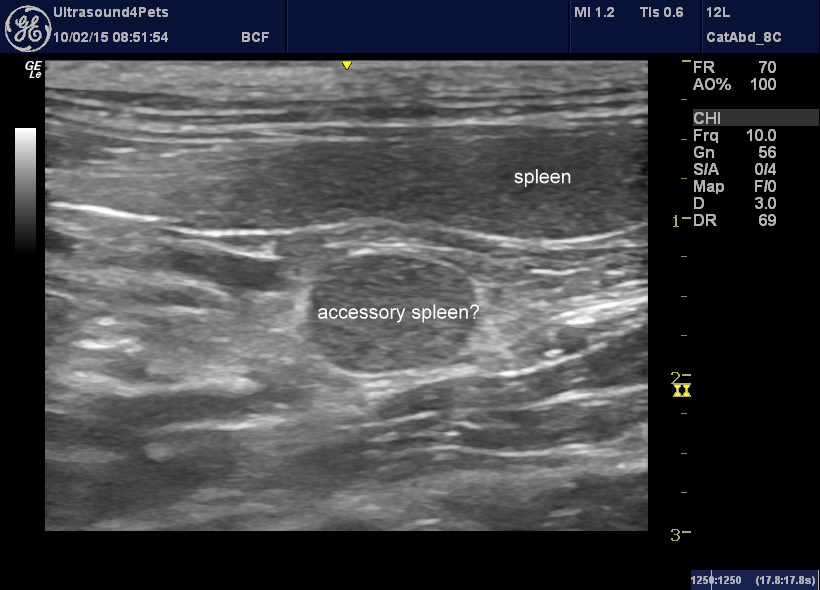Pancreatomegaly
…that’s not a term I often use in conversation but this cat, a 12 year-old MN DSH, certainly does have a big, but otherwise unremarkable, pancreas.
The left pancreatic lobe measures 13mm in diameter (compared to the top end of the normal range at 9.5mm).
The history for this case is increased appetite in an otherwise well cat. No obvious weight change and he is not noticeably polydipsic.
Additionally, he has a chunky right adrenal
I normally regard 5mm as the top of normal adrenal height in cats -so the cranial pole of this gland is markedly broad. the left adrenal was right at the top end of normal diameter.
There is also what I presume to be accessory splenic tissue.
This is all very interesting. Pancreatic enlargement is obviously common in cats with pancreatitis or pancreatic neoplasia -but if they are inflamed or infiltrated to this degree then I would usually expect to see changes in echotexture and/or shape. A completely normal-looking but diffusely large, regularly-shaped pancreas could conceivably be associated with amyloidosis. But, the main interest, given that this cat also exhibits adrenomegaly is the possibility of acromegaly.
Adrenomegaly also has its own list of differentials (including hyperadrenocorticism, acromegaly, hyperthyroidism and non-functional adrenal neoplasia) and has been associated with enlargement of various abdominal organs.
A low-dose dexamethasone suppression test (as per Valentin and others, JVIM 2014) was unremarkable. Hyperadrenocorticism seems unliekly. But IGF-1 was 1,100 ng/ml – a finding strongly suggestive of acromegaly.
Given that treatment options for acromegaly are currently quite severe and this patient remains outwardly well at the time of writing his owners may not opt for pituitary imaging at this stage. We may have to wait for a definitive diagnosis.








